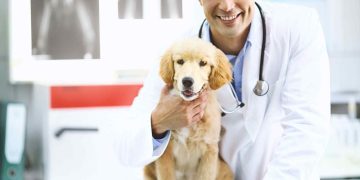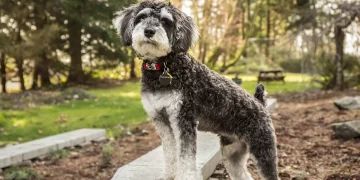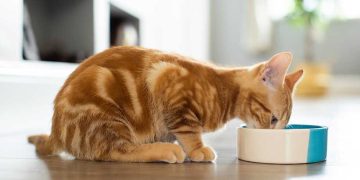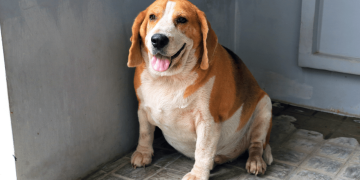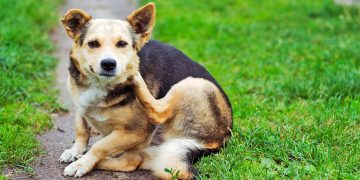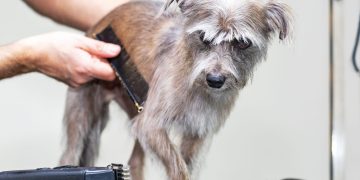As pet owners, we often find ourselves sharing moments with our pets that go beyond the usual pet care routine. Whether it’s snuggling on the couch, taking a walk in the park, or sharing a meal, many of us have thought about giving our pets a little taste of the food we eat. However, while some human foods are safe for pets, many can be dangerous. The idea of giving your pet a piece of your meal can seem harmless, but it’s essential to understand the risks and benefits involved before introducing human food into your pet’s diet.
This article will explore the pros and cons of feeding pets human food, provide a list of safe options you can offer your pet, and highlight common human foods that are toxic to pets. Whether you’re curious about what foods are safe or want to know how to properly introduce them to your pet, this guide will help you make informed decisions about your pet’s diet and overall health.
Pros and Cons of Feeding Pets Human Food
Before we dive into the specifics of safe human foods for pets, it’s important to weigh the potential pros and cons of feeding your pet human food. There are benefits to offering them the occasional treat, but there are also risks that should not be overlooked.
Pros of Feeding Pets Human Food
- Variety and Enrichment
Human food can provide variety in your pet’s diet, which can be especially beneficial if your pet is on a restricted diet or has limited options due to health concerns. A little bit of food from the table can also serve as a source of mental enrichment, as pets enjoy the novelty of different flavors and textures. - Health Benefits from Certain Ingredients
Some human foods are rich in vitamins, minerals, and antioxidants that can complement your pet’s regular food. For example, carrots are high in vitamin A, and blueberries are packed with antioxidants, both of which can provide health benefits to pets when served in moderation. - Bonding and Positive Reinforcement
Sharing human food with your pet in a controlled manner can strengthen the bond between you and your pet. Giving them a small treat from your plate can make them feel included and loved, especially during mealtimes. However, it’s important that this is done in a balanced way and doesn’t become a regular habit. - Useful in Training
Human food can also be used as a training tool. Many pets respond better to human food as a reward during training sessions. Using safe human food treats can encourage better behavior, reinforce training commands, and create more positive associations with training.
Cons of Feeding Pets Human Food
- Nutritional Imbalance
Human food is not formulated to meet your pet’s nutritional needs. While some foods are safe, others may lack essential nutrients or contain ingredients that are not suited for your pet’s digestive system. Relying on human food too much can lead to imbalances, which could cause long-term health issues. - Weight Gain and Obesity
Human food, particularly food that’s rich in fats and calories, can contribute to weight gain and obesity in pets. Overfeeding or regularly offering high-calorie treats can lead to significant health problems, such as diabetes, heart disease, or joint issues, especially in less active pets. - Digestive Issues
Pets’ digestive systems are not designed to handle the complexity of human food. Foods that are rich in spices, fats, and seasonings may cause stomach upset, diarrhea, or vomiting. Additionally, certain human foods, like chocolate or garlic, can be highly toxic to pets, even in small amounts. - Behavioral Problems
If pets become accustomed to being fed human food regularly, they may develop bad habits, such as begging at the table or becoming overly focused on food. This can also lead to picky eating habits, where pets refuse their regular food in favor of human scraps. - Toxicity Risks
Some human foods, even in small amounts, can be toxic to pets and cause immediate or long-term harm. Foods that are safe for humans may cause severe health issues in pets, including organ failure, digestive disturbances, and even death.
Safe Human Food Options for Pets
While there are certainly risks associated with feeding pets human food, there are many safe options that can be offered in moderation. Below is a list of human foods that are generally safe for both dogs and cats, as well as a breakdown of how each can benefit your pet’s health.
1. Carrots
Carrots are a great source of beta-carotene, fiber, and vitamin A, which are beneficial for both dogs and cats. They can be given raw or cooked and can help keep your pet’s teeth clean, especially when chewed. Carrots are low in calories, making them an excellent snack for overweight pets.
How to Serve:
- Cut carrots into small, bite-sized pieces for easy consumption.
- Serve raw for a crunchy snack or cook them lightly for easier digestion.
2. Apples (Without the Core or Seeds)
Apples are an excellent source of fiber and vitamin C. They are also low in calories and can help freshen your pet’s breath. However, it’s important to remove the seeds and core before offering apples, as the seeds contain cyanide, which is toxic to pets.
How to Serve:
- Slice apples into small pieces without the seeds or core.
- Offer them as a snack or use them as a training treat.
3. Blueberries
Blueberries are rich in antioxidants, which can boost your pet’s immune system and protect them from oxidative stress. These berries are also high in fiber and vitamin C, which supports digestive health.
How to Serve:
- Serve fresh or frozen (especially in warm weather).
- Great as a training reward or an occasional snack.
4. Plain Cooked Chicken (No Bones or Skin)
Chicken is a lean protein source that’s easy on your pet’s digestive system. It can be used to supplement their regular diet or as a high-value treat during training. Ensure the chicken is cooked plain without any spices, oils, or bones.
How to Serve:
- Boil or bake the chicken without seasoning.
- Cut into small, bite-sized pieces, ensuring no bones remain.
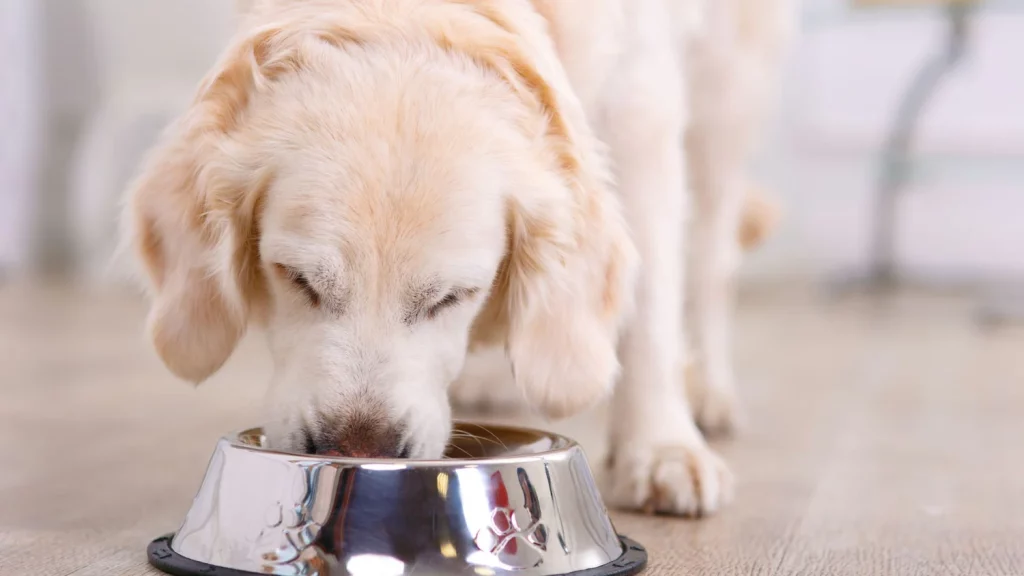
5. Sweet Potatoes
Sweet potatoes are an excellent source of fiber, vitamins (such as A and C), and minerals. They support digestive health and are good for both dogs and cats. Avoid adding butter, salt, or other seasoning, as these can harm your pet’s digestive system.
How to Serve:
- Cook and mash or slice them into small pieces.
- Offer as a treat or mix with your pet’s regular food.
6. Pumpkin
Pumpkin is a great source of fiber and can help with both constipation and diarrhea in pets. It is also rich in vitamins and minerals, including vitamin A, which supports eye and skin health. Ensure that you use plain canned pumpkin or fresh pumpkin and avoid pumpkin pie filling, which contains sugar and spices.
How to Serve:
- Cook the pumpkin and mash it before serving.
- Mix a small amount into their food or offer it on its own.
7. Plain Rice
Plain white rice can be a helpful food for pets dealing with digestive issues like diarrhea. Rice is easy on the stomach and can help bind stools and promote healing.
How to Serve:
- Cook rice thoroughly and serve in small amounts alongside their regular food.
- Pair it with boiled chicken for a bland diet if your pet has an upset stomach.
8. Peas
Peas are a good source of fiber and protein. They also contain vitamins like A, C, and K, which can support your pet’s immune system and overall health.
How to Serve:
- Offer fresh or frozen peas (make sure to thaw if frozen).
- Serve them whole or mashed.
Risks of Common Human Foods That Are Toxic to Pets
While there are many safe human food options, there are also several foods that are toxic to pets. It is crucial to be aware of these harmful foods to prevent accidental poisoning or serious health issues.
1. Chocolate
Chocolate contains theobromine, a substance that is toxic to both dogs and cats. Even small amounts can cause vomiting, diarrhea, rapid heart rate, seizures, and in severe cases, death. Dark chocolate is particularly dangerous due to its higher theobromine content.
2. Grapes and Raisins
Grapes and raisins can cause kidney failure in dogs, though the exact toxin is still unknown. Even small quantities can be harmful, so it’s best to avoid these fruits entirely.
3. Onions and Garlic
Both onions and garlic contain compounds that can damage red blood cells in pets, leading to anemia. Even small amounts can cause toxicity, especially when consumed over time.
4. Xylitol (Found in Sugar-Free Products)
Xylitol is a sugar substitute found in sugar-free gum, candies, and baked goods. It can cause a rapid drop in blood sugar, leading to hypoglycemia, seizures, liver failure, and even death in pets.
5. Alcohol
Alcohol is extremely toxic to pets. Even small amounts can cause symptoms like vomiting, diarrhea, difficulty breathing, tremors, and coma. In severe cases, alcohol poisoning can lead to organ failure and death.
6. Avocado
Avocados contain a substance called persin, which can be toxic to pets, particularly birds, and large quantities can cause gastrointestinal issues and breathing problems.
7. Macadamia Nuts
Macadamia nuts are toxic to dogs and can cause symptoms like weakness, vomiting, tremors, and elevated body temperature. The exact mechanism of toxicity is not yet fully understood, but it’s best to avoid them entirely.
**8. Caffeinated Be
verages**
Caffeine, found in coffee, tea, and energy drinks, can cause restlessness, rapid breathing, heart palpitations, and muscle tremors in pets. It can be fatal in large amounts.
Conclusion
Introducing human food into your pet’s diet can be a rewarding and enriching experience when done correctly, but it requires caution and careful consideration. While certain human foods, such as carrots, apples, and chicken, can provide valuable nutrients and variety to your pet’s diet, it is crucial to avoid toxic foods like chocolate, grapes, and onions.
Always introduce new foods slowly and observe how your pet responds. If in doubt, consult with your veterinarian to ensure that the human foods you’re offering are appropriate for your pet’s specific needs. By making informed decisions and following safety guidelines, you can enjoy sharing moments with your pet while keeping them healthy and happy.

